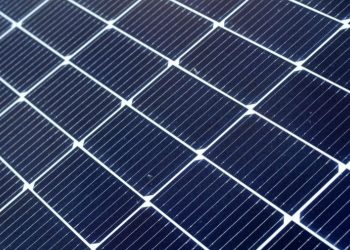.elementor-widget-text-editor.elementor-drop-cap-view-stacked .elementor-drop-cap{background-color:#69727d;color:#fff}.elementor-widget-text-editor.elementor-drop-cap-view-framed .elementor-drop-cap{color:#69727d;border:3px solid;background-color:transparent}.elementor-widget-text-editor:not(.elementor-drop-cap-view-default) .elementor-drop-cap{margin-top:8px}.elementor-widget-text-editor:not(.elementor-drop-cap-view-default) .elementor-drop-cap-letter{width:1em;height:1em}.elementor-widget-text-editor .elementor-drop-cap{float:left;text-align:center;line-height:1;font-size:50px}.elementor-widget-text-editor .elementor-drop-cap-letter{display:inline-block}
The Australian sunshine is a goldmine for solar power, and with a family of three considering an electric vehicle (EV), switching to solar makes even more sense. However, with all the options available, determining the ideal solar system size can take time and effort. This guide will help you navigate the key factors to consider when choosing a solar setup for your Australian household, including solar panels in Australia, batteries, and EV chargers.
.elementor-heading-title{padding:0;margin:0;line-height:1}.elementor-widget-heading .elementor-heading-title[class*=elementor-size-]>a{color:inherit;font-size:inherit;line-height:inherit}.elementor-widget-heading .elementor-heading-title.elementor-size-small{font-size:15px}.elementor-widget-heading .elementor-heading-title.elementor-size-medium{font-size:19px}.elementor-widget-heading .elementor-heading-title.elementor-size-large{font-size:29px}.elementor-widget-heading .elementor-heading-title.elementor-size-xl{font-size:39px}.elementor-widget-heading .elementor-heading-title.elementor-size-xxl{font-size:59px}
Understanding your energy needs
The first step is to understand your current electricity usage. Request your billing statements from the past year to clearly show your average monthly consumption (measured in kilowatt-hours, kWh). Look for seasonal variations – summer months with air conditioning will likely show higher consumption. Here’s what to consider:
- Current electricity bills: Look at your past year’s bills for an average monthly kilowatt-hours (kWh) usage.
- Hot water system: Electric water heaters can significantly impact usage. Consider alternative options like solar hot water or heat pumps.
- EV charging: If you plan on getting an EV, estimate your daily driving distance. An average EV in Australia uses around 7.3 kWh per 36.4 km. Factor this into your total daily energy needs.
- Future considerations: Do you plan on adding appliances or a pool? Account for potential future increases in usage.
Factors influencing solar system size
Several factors influence the size of your ideal solar system:
- Household size and daily habits: A family of three typically uses less energy than a larger family. Consider your hot water system, pool pumps, and appliance usage patterns.
- Location and sunshine hours: Sunshine hours vary across Australia. A solar assessment tool from a reputable installer can determine your roof’s solar potential.
- EV ownership (present or future): Electric vehicle (EV) charging adds significantly to your energy needs. Estimate your daily EV charging requirements based on your typical driving distance.
Solar panel size: Striking the balance
Once you grasp your energy needs, you can determine the size of your solar panel system. Here are some key points:
- kWh production: Solar panels are rated in kilowatts (kW), indicating their maximum power output under ideal conditions. To estimate daily kWh production, multiply your system’s kW rating by the average daily sunlight hours in your location (available online from government resources).
- Self-consumption: Aim for a system size that maximises your “self-consumption ratio,” which is the percentage of solar energy you use directly instead of relying on the grid. This is crucial in Australia, where feed-in tariffs for excess energy are often low.
- Roof size and orientation: North-facing roofs receive the most sunlight, maximising solar production. Measure your usable roof space and consider the number of panels that can fit comfortably. Shade from trees or chimneys can also impact efficiency.
Solar panel sizing for a family of three
Generally, a 5kW to 6.6kW solar system is a good starting point for a family of three in Australia. This size can generate enough electricity to cover most household needs, potentially with some feed-in to the grid. However, consider these adjustments based on your situation:
- Lower consumption (under 15kWh/day): A 4-5kW system might suffice, especially if you prioritise self-consumption (using the solar energy you generate) during the day.
- Higher consumption (above 20kWh/day): A larger system (7kW or above) might be necessary, particularly if you purchase an EV.
Read more about:
- How Many Panels in a 6.6kw Solar System
- 6000 Watt Solar Panels | 6kW Solar Panel System
- 7000 Watt Solar Panels | 7kW Solar Panel System
- Solar Panel Sizes, Dimensions And Wattage
- How Much Rooftop Solar Power Can You Install? – A State-by-State Guide
- Sun on Your Roof: Assessing Compatibility for Solar Panel Installation
Battery storage: Power beyond sunshine
Solar batteries allow you to store excess solar energy generated during the day for use at night or during peak grid pricing times. This can significantly increase your self-consumption and reduce reliance on the grid. Here’s how battery size factors in:
- Basic backup: A 5kWh battery can provide emergency backup power in case of outages.
- Increased self-consumption: A 10kWh or larger battery allows you to store more solar energy for evening use, maximising your self-sufficiency.
- EV charging: If you plan on using your solar energy for EV charging at night, you’ll need a battery sized accordingly. Talk to a solar installer about your specific EV and charging habits.
The battery factor: Storing sunshine for later
Solar batteries allow you to store excess solar energy generated during the day for use at night or during peak grid pricing times. This can significantly increase your self-consumption ratio and reduce reliance on the grid. However, batteries add to the upfront cost.
EV charger options: Powering up your ride
When considering an EV charger for your solar system, there are two main options:
- Standard wall charger: This is the most affordable option but offers slow charging speeds (around 10-15 km/h).
- Fast charger (AC Level 2): Provides significantly faster charging speeds (up to 70 km/h) but comes at a higher cost.
Choosing the right charger: Consider your daily driving needs and how much time you have available for charging. A standard charger might suffice if you primarily charge overnight. However, a fast charger might be worthwhile if you need a quick daily top-up.
.elementor-widget-image{text-align:center}.elementor-widget-image a{display:inline-block}.elementor-widget-image a img[src$=”.svg”]{width:48px}.elementor-widget-image img{vertical-align:middle;display:inline-block}

Government incentives and rebates
The Australian government offers various incentives to support solar adoption. These can vary by state, so check with your local government or Clean Energy Regulator for rebate programs that apply to your solar system and battery installation.
Additional tips
- Feed-in Tariffs: Investigate your local feed-in tariffs, which determine how much you get paid for excess solar energy exported back to the grid. This can influence your decision on battery storage.
- Future-proofing: Consider your future energy needs. A slightly larger system might be wise if you plan to add more appliances or another EV.
Read more about:
- Home Solar Rebates, Incentives & Subsidies In Australia
- Solar power incentives, loans & rebates for small business
- Solar Battery System Rebates, Subsidies, & Incentives
- Australian Solar Feed in Tariffs Information
- Solar Feed-in Tariff Comparison: Best Tariffs by State and Territory
- Electric Vehicles EV Rebates and Incentives Australia
Choosing a solar installer
Selecting a reputable Clean Energy Council (CEC) accredited solar installer is crucial. Here are some tips:
- Ask about warranties and ongoing support: Ensure the installer offers comprehensive warranties on panels, batteries, and inverters, and inquire about after-sales support.
- Check online reviews: Read reviews from past customers to get an idea of the installer’s reputation.
- Get multiple quotes: Compare solar quotes from several installers to ensure you get a competitive price.
Going solar with your family and EV
Transitioning to solar power with EV charging can significantly reduce your reliance on the grid and carbon footprint. You can choose the right solar system size and battery storage option by carefully considering your family’s energy consumption, EV ownership plans, and budget.
Consulting with a reputable solar installer will ensure a system tailored to your specific needs and maximise your solar energy benefits. Remember, with the abundant sunshine in Australia, solar power can be a smart investment for your family’s future.
Ready to go solar? Get an instant assessment
To find out how much a solar system with storage or even an EV charger will cost, try our easy-to-use solar power and battery storage calculator! It will generate performance data and possible cost savings.
We can forward your information to 3 trusted local installers in your area to obtain free, no-obligation solar quotes.
Find out how much you can expect to pay for solar
The form can be filled in the actual website url.
Ready to find out more? Get FREE quotes for solar, batteries + more
The form can be filled in the actual website url.
*Prices quoted are to be used as a guide only and do not factor in state and other rebates and incentives. Includes STC discount.
Our Energy Matters CEO, Roshan Ramnarain, will feature stunning homes installed with the latest solar technology every Saturday at 5:00 p.m. on Open Homes Australia on the 9Life channel. Be sure to watch this show; you won’t want to miss it!

The post Finding the Right Fit: Solar System Sizing for an Aussie Family of 3 with an EV appeared first on Energy Matters.


















